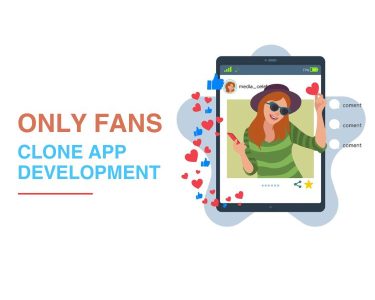Introducing the Author:
Hey there! I’m Sarah Jones, a social media marketing strategist with over 7 years of experience helping businesses like yours build a powerful online presence. In today’s digital age, where visual content reigns supreme, a strong social media visual identity is no longer a luxury – it’s a necessity. This article will guide you through 5 simple yet effective steps to create a visually captivating brand voice across all your social media platforms.
Stand Out: Social Media Visual Identity in 5 Steps
In the fast-paced world of social media, where attention spans are fleeting and competition is fierce, creating a strong visual identity is crucial for businesses of all sizes. It’s the silent language that speaks volumes about your brand, instantly grabbing attention and leaving a lasting impression on your target audience. But where do you even begin? Don’t worry, this guide has you covered!
Why Visual Identity Matters on Social Media
Visuals are processed by the human brain 60,000 times faster than text [Source: https://www.socialmediaexaminer.com/society/]. That’s right, a captivating image or video can instantly connect with your audience on an emotional level, fostering brand recognition and trust.
A cohesive visual identity across your social media platforms builds brand consistency. Imagine walking into a store with a specific brand in mind. You expect a certain aesthetic, a certain “feel” – the colors, the fonts, the overall vibe. Social media is no different. By maintaining a consistent visual identity, you’re essentially creating a recognizable brand experience for your audience, strengthening brand recall and loyalty.
Compelling Visual Content = Increased Engagement
Let’s face it, people are drawn to visually appealing content. High-quality images, infographics, and videos are more likely to stop a user scrolling through their feed and engage with your brand. This translates to higher click-through rates, increased brand awareness, and ultimately, more leads and conversions.
Know Your Audience: Building the Foundation
Before diving headfirst into creating visuals, take a step back and understand your target audience. Who are you trying to reach? What are their interests, preferences, and online behavior? Once you have a clear picture of your ideal customer, you can tailor your visual identity to resonate with them.
For example, if you’re targeting a younger audience on platforms like Instagram and TikTok, you might use a more playful and vibrant color palette with a focus on trendy visuals and short-form video content.
Table: Tailoring Your Visual Identity to Your Audience
| Audience | Color Palette | Style | Examples |
| Young Professionals (LinkedIn, Twitter) | Blues, Greys, Whites | Professional, Clean | Infographics, Charts |
| Millennials (Instagram, Facebook) | Bold, Vibrant Colors | Creative, Engaging | User-Generated Content, Lifestyle Images |
Remember: Your visual identity should reflect your brand personality and values, while also aligning with the expectations of your target audience.
This step may involve conducting market research, analyzing competitor content, and even creating audience personas to get a deeper understanding of your ideal customer.

Colors, Fonts & Co.: Crafting Your Visual Language
Now that you understand your audience, it’s time to translate that knowledge into a visual language. Here’s where you’ll define the core elements that make up your brand’s aesthetic:
- Color Palette: Colors evoke emotions and have the power to influence brand perception. Choose a color palette that aligns with your brand personality and resonates with your target audience. Think about the message you want to convey. For instance, blues and greens represent trust and stability, while reds and oranges exude energy and excitement.
- Fonts: Typography plays a crucial role in establishing brand recognition. Select fonts that complement your logo and overall aesthetic. Consider using a combination of a headline font for titles and a body font for your content. Ensure both fonts are readable and work well together.
- Imagery & Design Elements: This encompasses the types of images and design elements you’ll use on your social media platforms. Will you focus on product photography, lifestyle imagery, or illustrations? Do you want a minimalist aesthetic or a more elaborate design style? Consistency is key here. Develop a library of high-quality visuals that maintain a cohesive look and feel.
Pro Tip: Create a Brand Style Guide
A brand style guide is a document that outlines your brand’s visual identity. It should include your color palette, fonts, logo variations, and any specific design elements you want to use consistently. This guide serves as a reference point for anyone creating content for your social media platforms, ensuring visual consistency across the board.
Content is King (and Queen): Visual Storytelling Techniques
So you’ve got your visual language down pat. Now, let’s talk about how to use it to tell compelling stories.
- Storytelling Through Images: People connect with stories. Use high-quality images that capture attention, evoke emotions, and communicate your brand message. Consider using a mix of photography, illustrations, and graphic design elements to keep your content visually interesting.
- The Power of Video: Videos are king (and queen) on social media! They’re highly engaging and can be used to showcase your products, services, brand story, or even behind-the-scenes glimpses into your company culture. Utilize platforms like Instagram Reels and TikTok to create short-form video content that resonates with your audience.
- User-Generated Content (UGC): Don’t underestimate the power of UGC! UGC, such as customer photos and testimonials, adds authenticity and social proof to your content. Share UGC strategically to build trust and encourage user engagement.
Remember: Don’t just post for the sake of posting. Create high-quality visual content that tells a story, entertains, and ultimately, connects with your audience on a deeper level.
Consistency is Key: Maintaining Your Visual Brand
You’ve invested time and effort in crafting a stunning visual identity. Now, the most important part: maintaining consistency across all your social media platforms. Here’s how:
- Develop a Content Calendar: Plan your social media content in advance, ensuring you have a consistent flow of visually appealing posts. A content calendar helps you stay organized and maintain a consistent visual aesthetic across all platforms.
- Utilize Design Tools: There are various free and paid design tools available to help you create visually compelling content, even if you’re not a graphic designer. Tools like Canva, Adobe Spark, and Snappa offer user-friendly templates and editing features that can elevate your visuals.
- Stay Inspired: Follow industry leaders and brands you admire on social media. See how they use visuals to tell their brand story and draw inspiration for your own content creation.
By maintaining consistency, you’ll solidify your brand image in the minds of your audience and build stronger brand recognition.
Bonus Tip: Tools & Resources to Elevate Your Visuals
- Free Stock Photo Websites: Unsplash, Pexels, Pixabay
- Design Tools: Canva, Adobe Spark, Snappa
- Social Media Management Tools: Hootsuite, Buffer, Sprout Social
Conclusion
Building a strong social media visual identity is not a one-time effort. It’s an ongoing process that requires dedication and strategic planning. But by following these 5 steps and utilizing the available tools and resources, you can create a visually captivating brand presence that attracts, engages, and converts your target audience. So, go forth and conquer the social media world with your unique visual identity!




